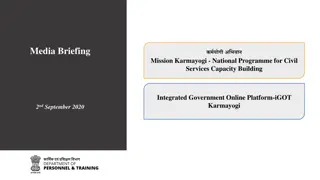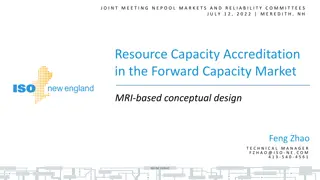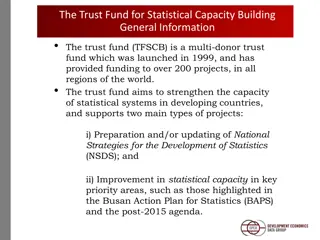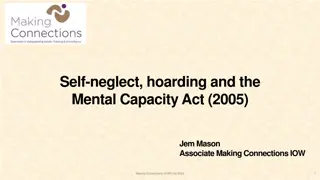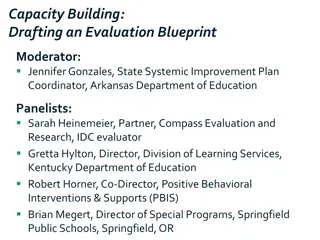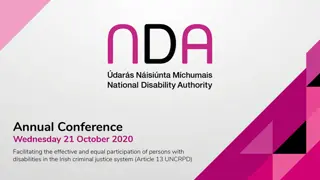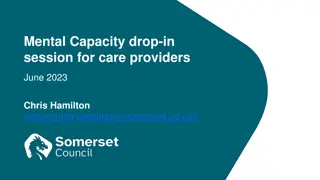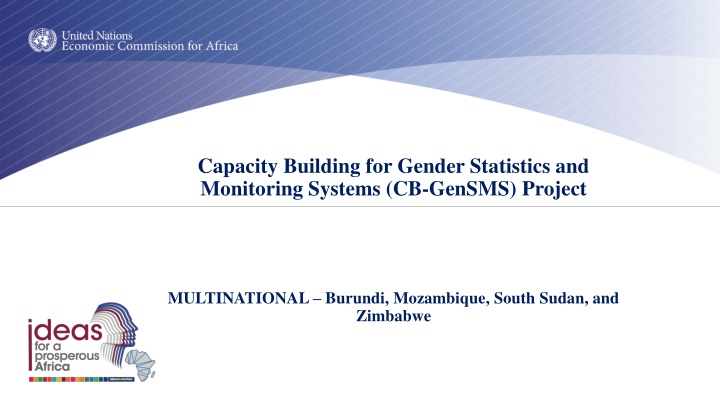
Enhancing Gender Statistics for Inclusive Development
Addressing challenges in gender statistics in Africa through the Capacity Building for Gender Statistics and Monitoring Systems Project in Burundi, Mozambique, South Sudan, and Zimbabwe. The project aims to strengthen statistical systems, improve capacity for collecting and disseminating gender statistics, and enhance reporting on gender results across sectors to foster inclusive development.
Download Presentation

Please find below an Image/Link to download the presentation.
The content on the website is provided AS IS for your information and personal use only. It may not be sold, licensed, or shared on other websites without obtaining consent from the author. If you encounter any issues during the download, it is possible that the publisher has removed the file from their server.
You are allowed to download the files provided on this website for personal or commercial use, subject to the condition that they are used lawfully. All files are the property of their respective owners.
The content on the website is provided AS IS for your information and personal use only. It may not be sold, licensed, or shared on other websites without obtaining consent from the author.
E N D
Presentation Transcript
Capacity Building for Gender Statistics and Monitoring Systems (CB-GenSMS) Project MULTINATIONAL Burundi, Mozambique, South Sudan, and Zimbabwe
Gender Statistics Challenges in Africa Lack of an enabling environment, including poor legal frameworks and a weak policy environment Lack of Domestic financial resources for gender statistics Poor coordination Mechanism Lack of harmonization of concepts, definitions and methodologies as well as poor technical capacities Data accessibility, including poor open data policies and programmes Lack of gender-specific surveys Poor integration of gender statistics into ongoing statistics work; poor administrative records; and ineffective and outdated dissemination approaches 2
Project Justification Compiling gender statistics for Africa Regional Members States is essential to meeting the urgent need for reliable and timely data to help in the formulation and further refining of gender-responsive Poverty Reduction Strategies. Gender statistics are key for inclusive national development planning. Unfortunately, almost all African countries are facing challenges in producing and disseminating robust gender statistics. 3
Project Objectives Addressing these challenges is key in encouraging policy and strategy debates or dialogues that respond to gender inequalities and also capture good practices for inclusive national development planning. The Project aims to contribute to improved gender responsive programming by beneficiary countries, therefore contributing to inclusive development. It will contribute to addressing inequality and fostering inclusive growth by providing data on the invisible and most vulnerable, which are often drivers on fragility. 4
Expected Outcomes and Outputs: The project s expected outcome are: (i) Strengthened statistical systems in beneficiary countries (ii) Improved capacity of national bureaus of statistics to collect, interpret and disseminate gender statistics (iii) Improved capacity of beneficiary countries to report on gender results across sectors These will be achieved through the following outputs: (i) Increased availability of gender-related knowledge (ii) Frameworks to produce quality, comparable and regular gender statistics across all sectors are established 5
Indicators to measure progress : Some of the indicators to measure progress include : Proportion of required gender-related SDG indicators available in the beneficiary countries; Number of beneficiary countries that adopt the Minimum Set of Gender Indicators for Africa in their Monitoring & Evaluation systems Number of modules developed and used for training; Number of national officials trained on gender statistics; Number of trainers who acquire skills to train others on gender statistics; Number of tools developed to integrate gender into national statistical systems; Number of gender-related knowledge products developed and disseminated; and Number of countries that approve and adopt a national gender results monitoring framework. 6
Component I Capacity Building for Gender Statistics Activities that will be supported under component I: 1. Integrating gender in civil registration statistics: This will support the development of tools and manuals for integrating gender into civil registration data processes. 2. Integrating Gender in Labour Statistics and Census: This involves developing tools and manuals for time use studies, customizing and training on the UNSD tool at the country level, and updating it at the regional level. 3. Gender Strategies for NSDS (National Strategy for the Development of Statistics) and Dialogue on Gender Statistics: This includes developing gender mainstreaming strategies for NSDS, regional training, and dialogues on gender statistics. 7
Component II Development of National Gender Monitoring Systems Activities that will be supported under component II: 1. Enhancing the Coordination and Governance of Gender Statistics and Reporting: This refers to the systematic approach to improving the collection, analysis, and dissemination of gender-disaggregated data 2. Strengthening Institutional Capacity for Gender Reporting Across Key Stakeholders: This entails enhancing the skills, knowledge, and systems within institutions such as the Ministry of Gender, the National Statistical Office, all government ministries, and civil society organizations to improve the quality, consistency, and comprehensiveness of gender-related reporting 3. Comprehensive Situation Analysis of Monitoring Systems: This involves conducting a detailed assessment of existing monitoring systems to evaluate their functionality, efficiency, and alignment with organizational objectives and strategic priorities. 4. Production of Gender Fact Sheets / gender status report: Gender Fact Sheets are designed to present key statistics, indicators, and analysis in a user-friendly format, making complex data accessible to policymakers, stakeholders, and the general public. 5. Development of a gender Analysis Framework for Statistics in order to transform statistics to be gender responsive : The framework serves as a strategic tool to integrate a gender perspective into statistical systems, ensuring that all data reflects the realities, experiences, and needs. 8





